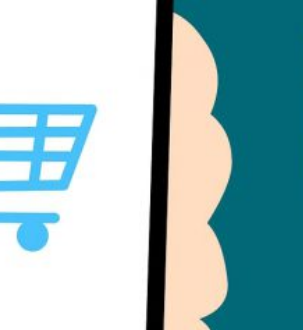
Listen to this blog
Written by AJ Leale, Sr. Director eCommerce
Most retailers are focused on improving their cart abandonment rate. And rightly so. With the cart abandonment rate at about 75 percent, it is important for retailers to minimize this problem.
If your brand suffers from this exact problem, there is something in your checkout process that causes ready-to-buy customers to leave without finalizing the purchase.
In this post, we’ll examine the best practices for improving the guest checkout process while minimizing the risk of losing customers.
1. Offer One-page Checkout
Ideally, guest checkout should be limited to one page. All important information such as contact information, billing address, delivery address, and payment details could fit onto it. This speeds up the buying process, especially for consumers who are shopping on mobile.
Adding additional options such as the PayPal button could also reduce the on-form filling.
Plenty of brands use one-page checkout forms as a way to increase conversions and improve customer experience.
Sephora is one such brand. They created a staged checkout but everything shows up on a single page.
Adidas is another brand that gets this concept perfectly. Their checkout form is simple, short, and self-contained. There is no navigation bar that would lead users to other sections of the site and no other annoyances that would slow down the buying process.
2. Pay Attention to Speed
Having a non-responsive site can hurt customers’ satisfaction with the online shopping process. One of the most common examples are pauses that happen after pressing certain buttons.
Such delays in loading during the checkout process can lead customers to think that the site has a poor performance and that it’s untrustable.
A slow checkout page can be a result of several issues. The site may have too many JS error issues, a lot of static content such as images and CSS files or third-party tools/apps that are not compatible with the checkout. Low-quality is another important factor that leads to slow pages on the site.
Vitamin World is an example of a brand that pays special attention to the speed and offers a seamless shopping experience for its users.
3. Allow Users to Save Information For Next Time
At the end of the transaction, allow users to save their customer details for next time. This implies convenience and shows them that they are your primary focus.
Using the word “register” can put customers off.
For additional convenience, brands can work on allowing automatic filling in of details that the customer has already given.
The benefits of saving details after the purchase should be clearly outlined. Users should also have a range of marketing preferences to choose from if they decide to sign up.
4. Optimize Forms
Keep forms as short as possible and only ask for information that is necessary to complete a purchase. Remove unnecessary fields such as the title (Mr./Mrs./Miss) and don’t ask for both home and work phone.
Labels placed above fields are also easier and quicker to scan. Localization is also made easier as there is more space for longer translations.
Autofill fields should be the norm. Not only does this save time but it also reduces errors. The autofill option is known for improving online conversions.
Most browsers already offer this functionality but for this to work successfully, brands need to make sure that their fields are properly tagged with labels that a browser will recognize.
Allow customers to use the same address for shipping and billing without having to do additional typing. In the billing part, summarize the shipping address as editable content.
Rebecca Taylor is an example of a brand that offers a seamless shopping experience for their customers.
5. Showcase Security Icons and Guarantee Messaging
Customer confidence can be boosted with messaging and trust icons. Nearly 51 percent of shoppers don’t purchase online because they are concerned about security.
This can be alleviated by placing security icons close to the credit card and payment fields.
Additionally, brands should remind customers of the value proposition and services such as risk-free shopping, satisfaction guarantee, free returns, and other benefits they offer.
6. Use Clear CTA Buttons
Specific CTA descriptions such as “complete order”, “continue shopping”, “proceed to checkout”, “apply promo code”, etc., should be used to describe the next step customers will be redirected to after pressing the button.
It is important to take into consideration that shoppers anticipate the next thing that is going to happen after clicking on a specific command.
CTAs should include action-oriented words and they should be a good representative of the actions that visitors are taking. Certain action-oriented words can help maximize conversions.
Check one of our previous posts where we explain how to craft engaging eCommerce calls to action.
7. Have a Wide Variety of Payment Options
Offering a wide array of payment options is known to increase conversions. Alternative payment methods, also known as APMs are expected to comprise nearly 55 percent of global eCommerce payments during 2019.
Nowadays, there are more than 200 alternative payment methods. These include bank transfers, digital wallets, e-invoices, digital currencies, etc.
Although credit cards are still widely used they are becoming increasingly dematerialized.
Shoppers typically prefer only one to two payment methods and that’s why shopper recognition plays an important role too.
Conclusion
Getting higher conversion rates from an eCommerce checkout form is something that each brand can have control over. All it takes is a little effort. Contact us and let us help you implement strategies that will drive more traffic and ultimately more sales for your business.




